The current three-some of painters at Bridgette Mayer Gallery ask how many ways a painting can be abstract. Works in the large galleries pair Leslie Wayne’s small sculptural paintings and Neil Anderson’s large lyrical topographies. While Wayne is interested in using paint as a sculptural material, Anderson’s work reinforces paint’s flatness. Matthew Fischer, in the Vault, presents work that is between these two extremes.
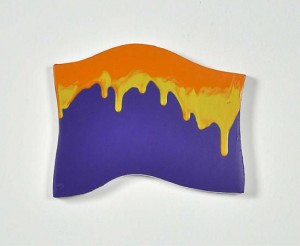
Wayne’s “One Big Love #50” from 2010 encapsulates many of the ideas that are central to the artist’s work. The poured field of paint is a nod to Helen Frankenthaler and the history of Abstract Expressionism, but Wayne pours a thick layer that rejects the AbEx emphasis on flatness. Instead, she uses paint as a sculptural medium. In Wayne’s hands, oil paint is a highly malleable medium, molded into tight accordion formations. Other formal decisions also deviate from the conventions of this history. Wayne’s canvases are organically shaped, rejecting the idea that the painting extends beyond its rectangular borders. With their small scale, her works might be a conscious effort to reject the macho history of Abstract Expressionism. Whether her position is feminist or not, her works are humble, in stark contrast to the heroics associated with the Abstract Expressionist movement.
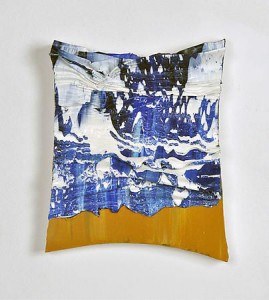
Wayne’s built-up paintings resemble natural formations. Her reference to nature is most obvious in “One Big Love #55,” which portrays the shoreline of a beach. Using paint, Wayne mimics the undulation of the waves as they break and meet the shoreline. This interest in natural forces is also present in the artist’s more abstracted works.
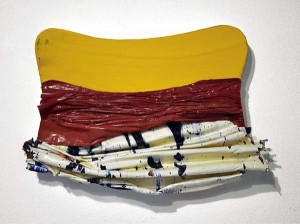
In paintings such as “One Big Love #74,” Wayne creates a tension between the flat and three-dimensional. From top to bottom, the work transitions from a field of solid color to painted formations that appear increasingly crunched under stress. Like the wave that travels to the shore, many of Leslie Wayne’s works incorporate time. Each work builds up to the moment when a physical body is generated or collapses. “One Big Love” shares its name with Patty Griffin song’s about young, summer love, which also acknowledges the fleeting moment. Inevitably deteriorating, each work also reflects anxiety induced by the fragile state of the environment.
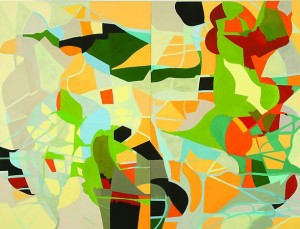
In a separate room, Neil Anderson’s abstract paintings have sinuous, maze-like curves, and their color palette is vibrant and exuberant. The different sections of color recall maps and the topographical. Anderson takes his forms from organic objects that he photographs and then projects onto his canvas. His works have a formal beauty and cohesion, and unlike Wayne, he isn’t commenting on painting as a medium.

In the vault gallery, Matthew Fischer has a small showing of four works. Like Wayne, his paintings also seem inspired by natural forces. The works share physicality, created with the artist’s deft brushstrokes. The artist builds successive layers of paint masking portions underneath. In “Cal,” this final layer is used to reinforce the painting’s flatness, creating a barrier between the viewer and other moments in the work.
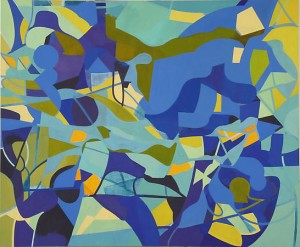
For a gallery that shows mostly abstraction, it’s not surprising that the artists at Bridgette Mayer run the gamut, from color field to action painting. While Neil Anderson and Matthew Fischer’s work can be seen at opposite ends of these two poles, Leslie Wayne’s work deviates from this history. Of the three artists, hers is the most thought-provoking, acknowledging this history while still seeing potential in the medium.









